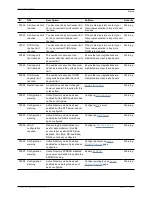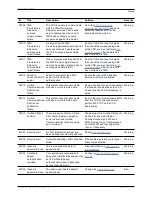
Call types and licensing
This section describes the different call types recognized by the VCS and how they are licensed.
Call types
The VCS distinguishes between the following types of call:
n
Unified CM remote sessions
: these are "mobile and remote access" calls i.e.video or audio calls from
devices located outside the enterprise that are routed via the Expressway firewall traversal solution to
endpoints registered to Unified CM. These calls do not consume any type of call license.
n
VCS traversal calls
: these are standard VCS video or audio calls, including business-to-business calls,
B2BUA calls (for media encryption or ICE), and interworked or gatewayed calls to third-party solutions
where the VCS takes both the call signaling and the call media. Each call consumes a traversal call
license.
Audio-only SIP traversal calls are treated distinctly from video SIP traversal calls. Each traversal call
license allows either 1 video call or 2 audio-only SIP calls. Hence, a 100 traversal call license would allow,
for example, 90 video and 20 SIP audio-only simultaneous calls. Any other audio-only call (non-traversal,
H.323 or interworked) will consume a standard video call license (traversal or non-traversal as
appropriate).
n
VCS non-traversal calls
: these are standard VCS video or audio calls where the signaling passes through
the VCS but the media goes directly between the endpoints, or between an endpoint and another system in
the call route. Each call consumes a non-traversal call license. Note that Lync B2BUA calls are classified
as non-traversal calls (even though the media does traverse the VCS).
Both
Unified CM remote sessions
and
VCS traversal calls
consume traversal call resources and each
VCS has a maximum limit of 150 concurrent traversal calls (500 calls on Large VM servers).
Each VCS also allows up to 750 concurrent non-traversal calls.
Note that:
n
VCS defines an "audio-only" SIP call as one that was negotiated with a single “m=” line in the SDP. Thus,
for example, if a person makes a “telephone” call but the SIP UA includes an additional m= line in the SDP,
the call will consume a video call license.
n
While an "audio-only" SIP call is being established, it is treated (licensed) as a video call. It only becomes
licensed as "audio-only" when the call setup has completed. This means that if your system approaches its
maximum licensed limit, you may be unable to connect some "audio-only" calls if they are made
simultaneously.
What are traversal calls?
A traversal call is any call passing through the VCS that includes both the signaling (information about the
call) and media (voice and video). The only other type of call is a non-traversal call, where the signaling
passes through the VCS but the media goes directly between the endpoints (or between one endpoint and
another VCS in the call route, or between two VCSs in the call route).
A call is “traversal” or “non-traversal” from the point of view of the VCS through which it is being routed at the
time. A call between two endpoints may pass through two or more VCSs. Some of these VCSs may just
take the signaling, in which case the call will be a non-traversal call for that VCS. Other VCSs in the route
may need to take the media as well, and so the call will count as a traversal call on that particular VCS.
Cisco VCS Administrator Guide (X8.1.1)
Page 403 of 507
Reference material
Call types and licensing
















































